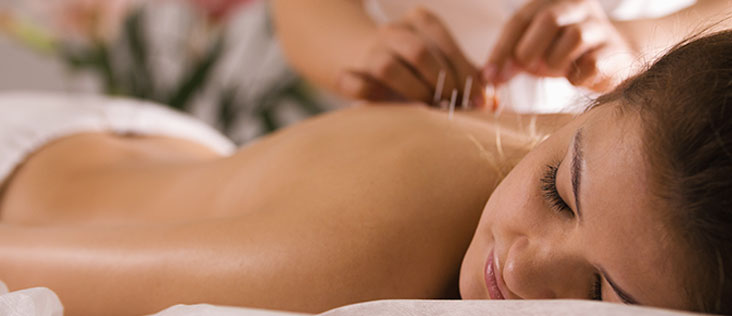
What is Acupuncture?
Acupuncture is a traditional technique which has been used for the past 3000 years and is originally from China. It has been gaining popularity in the recent past and is one of the fastest growing alternative medicine therapies.
Acupuncture involves putting fine needles into the skin, connective tissue and muscle. It can be used to treat a wide range of common health problems such as to reduce pain, ease muscle tension, release knots in the connective tissue and help the healing process.
A physiotherapist would use acupuncture as a way of helping to relieve any pain. When you use acupuncture, it stimulates your brain and your spinal cord to produce natural pain relieving chemicals, such as endorphins, melatonin (which helps you sleep) and serotonin (which naturally promotes wellbeing). Acupuncture is also known to stimulate the nerve fibres to block pain signals and help reduce the sensitivity of tender points in the body.
Acupuncture is often combined with other treatments such as manual therapy or exercise to provide better and longer lasting effects.
When you come for your assessment, your therapist will first assess whether you are a suitable candidate for acupuncture. If you are, then you will need to complete a written consent form and then you are all ready to go!
Our physiotherapists would use acupuncture to treat various conditions such as :
- Lower back pain
- Neck pain
- Osteoarthritis
- Muscular and Joint pain
- Headache and Migraines
- Sciatica
- Achilles tendon injuries
- Tennis/Golfers elbow
So, what happens in a session?
During the session, your therapist would use between 5 and 20 needles which would be placed in pressure points under your skin. Each and every needle is pre-sterilised and disposable, meaning that they are only ever used once. When your therapist has placed the needles in the correct points, they will leave you for anything from a few minutes up to 20 minutes and your only job is to lie still! When this period is over, your therapist will remove the needles. This does not hurt and you may experience a feeling of warmth or a tingling or dull ache around where the needles were placed.
What does acupuncture actually do?
It is well known that acupuncture can help ease the symptoms of various physical conditions as well as :
- Reducing pain
- Easing muscle tension
- Helping healing processes
- Bringing about local and general relaxation
- Lowering stress levels and anxiety
- Improving sleep pattern
- Promoting general well-being
Used as a holistic treatment, acupuncture not only positively affects pain and discomfort, but it can also improve your general wellbeing.
Will acupuncture hurt?
No! Some people may experience and pinch like sensation as the needles are inserted but nothing more.
Are there any side effects to Acupuncture?
There are a few side effects, but they are not common and most of the affect less than 0.5% of the population (1 in every 200 people). You might get some bleeding or bruising, or even a mild pain where the needles were put in. You might feel drowsy, dizzy or nauseous or it may cause a headache or an allergy.
You may also have some involuntary muscle twitching, which can occur during or after acupuncture treatment. Whilst the side effects are rarely a cause of concern, if they last for a longer amount of time or are severe, then you should contact your therapist as soon as you can
Top Tips:
- Make sure you have something to eat 1-2 hours before your treatment. This will help reduce the risk of you feeling faint during your session by keeping your sugar levels up.
- Wear comfortable clothing as the therapist will need to expose the area being treated.
- If you continue to feel tired after a treatment, it is recommended that you do not drive or operate machinery.
If you want to find out more about acupuncture, please feel free to email me at admin@xcelhealth.co.uk or give us a ring on 01795 606066. Alternatively, please fill out the form below for more information

 01795 60 60 66
01795 60 60 66 admin@xcelhealth.co.uk
admin@xcelhealth.co.uk
